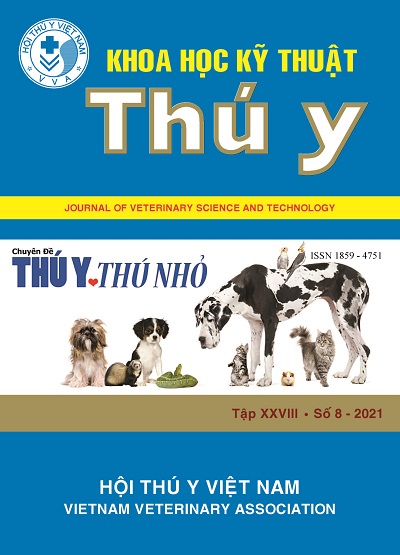Epidemiological characteristics in dogs infected with Parvovirosis and effectiveness of the treatment regimen at veterinary clinic, Thai Nguyen university of agriculture and forestry
Abstract
The canine parvovirus (CPV) antigen test kit was used to test 1,414 dogs brough to
examination at the Veterinary Clinic, Thai Nguyen University of Agriculture and Forestry. The
studied results showed that 511 dogs were positive with parvovirus, accounting for 36.14%. The
prevalence of CPV in localities varied from 32.94% to 42.68%. The mortality rate in the infected
dogs was 10.37%. The CPV prevalence in the exotic dogs was higher than that in the indigenous
dogs (14.07% and 6.35%, respectively). The CPV prevalence in the dogs decreased gradually
by ages, the CPV prevalence was significantly different among the dog age groups (P<0.05),
in which the dogs under 6 months old were most susceptible to the disease and most likely
to die, the morbidity rate of this group was up to 84.36%, the mortality rate was 13.25% in the
group of dogs under 3 months old. In the dog group under 6 months old, the CPV prevalence
was 60.37%, the mortality rate was 9.34%. The dogs could be infected with parvovirosis in all
seasons of the year, but the highest prevalence was found in the spring (49.75%), followed by
the summer (36.50%), in winter (31.41%), in autumn (24.78%). The unvaccinated dog group
suffered from PCV with higher prevalence and mortality rate (68.75% and 11.04%, respectively)
than those in the vaccinated dogs (6.60% and 4.08%, respectively). Using regimen 2 to treat the
PCV dogs was shorten the treatment time and increased the treatment efficacy (92%).

